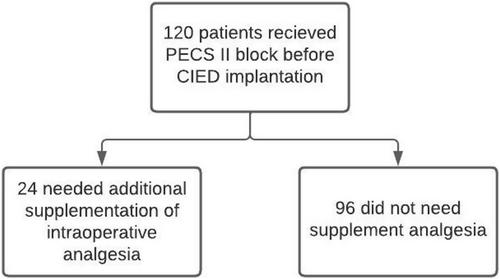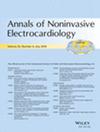Pectoral Nerve Block II for Cardiac Implantable Electronic Devices
Abstract
Aim
This study aimed to assess the feasibility and effectiveness of the pectoral nerves (PECS) II block in facilitating cardiac implantable electronic device (CIED) insertion in a sample of 120 patients, with a focus on the percentage of cases completed without additional intraoperative local anesthesia.
Methods
PECS II blocks were performed on the left side using ultrasound guidance in all 120 patients. Feasibility was assessed by the proportion of cases completed without the need for extra intraoperative local anesthetic. Secondary outcomes included the amount of additional local anesthetic used, intraoperative opioid requirements, postoperative pain scores, time to first postoperative analgesia, analgesic consumption, patient satisfaction, and block-related complications.
Results
Of the 120 patients, 78 (65%) required additional intraoperative local anesthetic, with a median volume of 8.2 mL (range 3–13 mL). Fifteen patients (12.5%) needed intraoperative opioid supplementation. Nine patients (7.5%) required postoperative tramadol for pain relief. In total, 98 patients (81.7%) reported high satisfaction levels with the procedure.
Conclusions
The PECS II block, when combined with supplementary local anesthetic, provided effective postoperative analgesia for at least 24 h in 120 patients undergoing CIED insertion. While it did not completely replace surgical anesthesia in most cases, the PECS II block significantly contributed to a smoother intraoperative experience for patients.


 求助内容:
求助内容: 应助结果提醒方式:
应助结果提醒方式:


